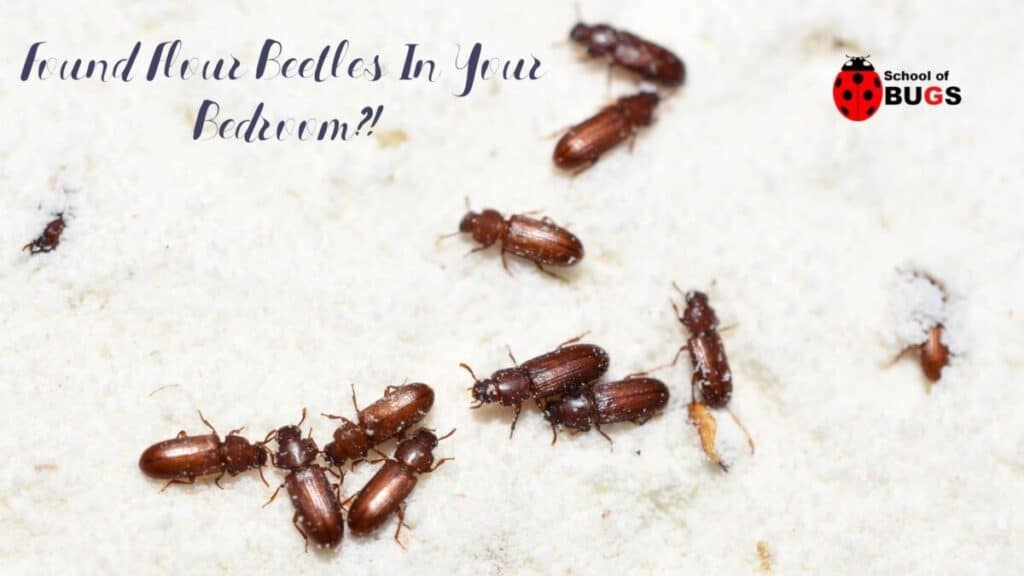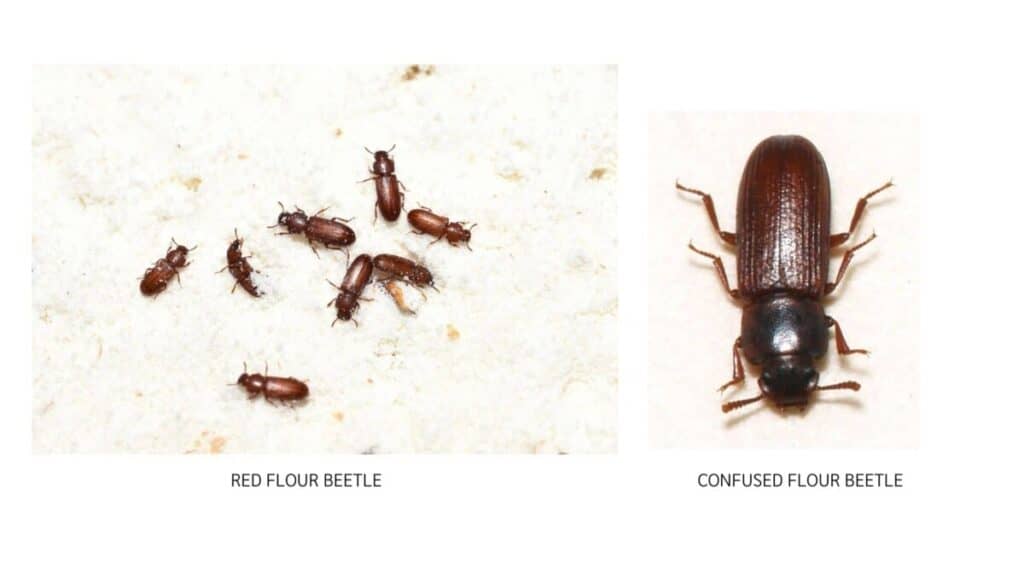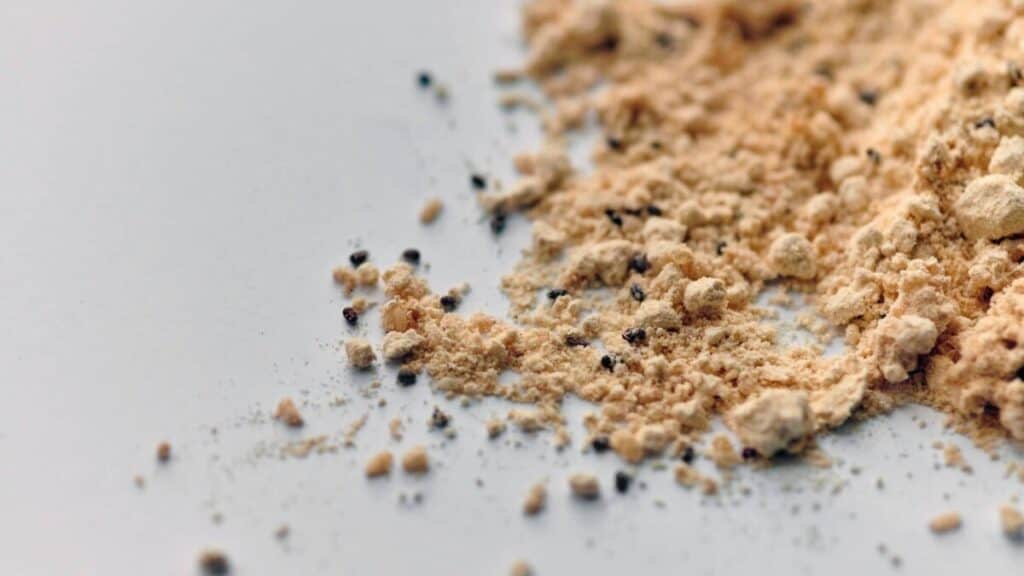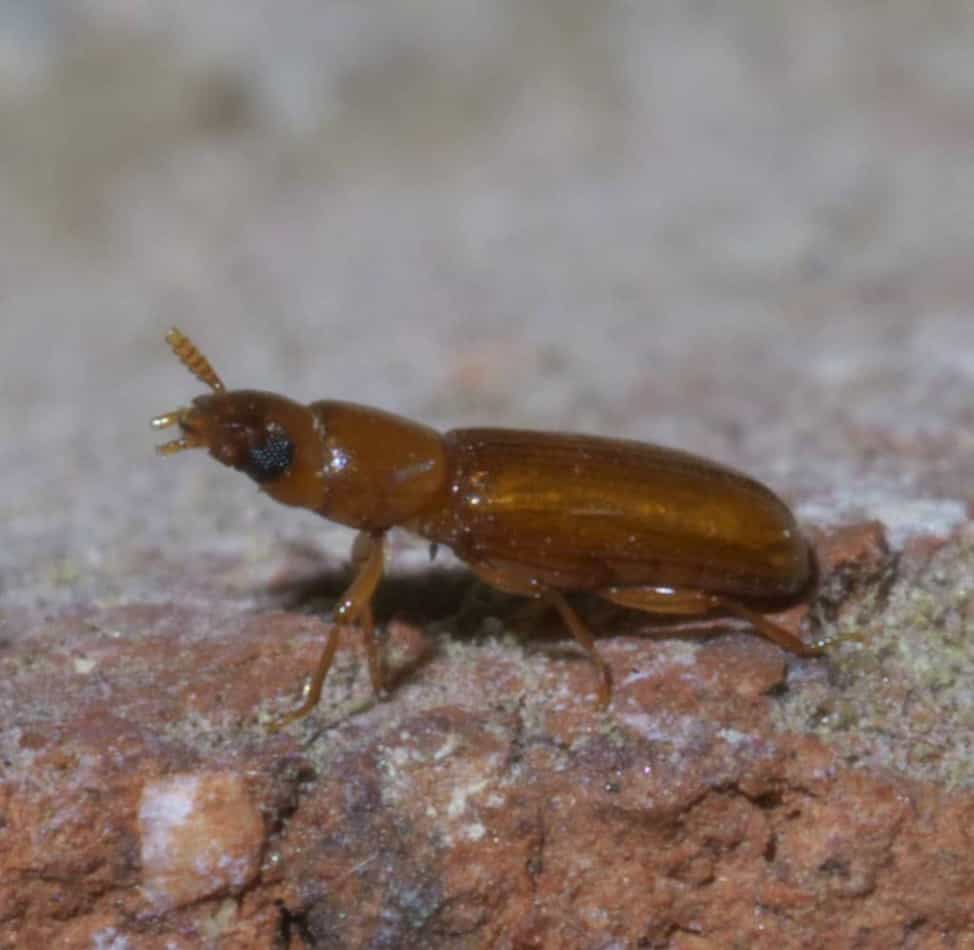
If you see tiny red or reddish-brown insects on your bed, you may wonder whether they are bed bugs. However, they may not be so.
Three types of beetles are frequent visitors to the bedroom. They include the red flour beetle (Tribolium castaneum), the confused flour beetle (Tribolium confusum), and the minute brown scavenger beetle (Latridiidae).
We will talk about the two types of flour beetles here. As their names suggest, they are attracted to flour and another store/pantry goods, but they can easily end up in the bedroom.
Flour beetles are also called grain beetles or pantry beetles in some cases.
Before we get into that, let’s look at the differences between the two types of flour beetles.
How are Red Flour Beetles Different from the Confused Flour Beetles?
The two species are extremely similar in terms of how they look and behave.
They are both storage pests, found all over the world as well as in the US. They are dark red to reddish-brown.
They are typically about 1/8 inches in length, though some adults can reach double that size. As a result of these similarities, and till very recently, scientists believed that they were the same species!

The similarities in looks and behavior ultimately resulted in naming the “confused” flour beetle.
The name does not refer to how these beetles behave (that is, roam all around as if confused) but rather alludes to the confusion among scientists bout them actually being a different species than the red flour beetle.
Red flour beetles are known as one of the most rapacious stored grain bugs. They may be known with slightly different common names outside the US.
For example, they are often called bran beetles in the UK.
There are some differences among the species, though not a whole lot.
Differences among the Red and Confused Flour Beetle
Some of the key differences among red and confused flour beetles are as follows:
- One of the easiest ways to distinguish the two is from their flying habits. Red flour beetles can fly, confused flour beetles cannot.
- If you get a close look through a magnifying glass, you will notice that red flour beetles have three segmented antennae that end abruptly in a club shape. Confused flour beetles, on the other hand, have four segmented antennae that gradually widen as they spread outwards from the head.
Another difference may or may not be visible to an individual homeowner. Red flour beetles like temperate, tending to warm/hot climates.
In their natural habitats within the US, for example, they are found more frequently in the south and southeastern states.

Confused flour beetles, on the other hand, prefer cooler climates and will frequent the north and northeastern states.
However, over time, and with growing spread of the species, even colder northern climates have become home to the red flour beetles.
All that happens is that they tend to move inside human homes during the fall and winter months.
This not only makes it harder to distinguish between the species but fundamentally leads to a greater indoor infestation over time.
What Do Flour Beetles Eat?
Flour battles principally eat flour from broken grains, meal, cereal, nuts, and pasta – which is markedly different from the diet of bed bugs that principally feed on blood.

This makes flour beetles show up in pantries, food storage and processing facilities.
However, they also target other items found around the house, such as dried flowers, potpourri, herbs, pet food, and taxidermied specimens.
This can cause them to take up residence in bedrooms and living areas.
How do Flour Beetles End Up in the Bedroom?
Flour beetles move about quite a bit, it’s in their very nature. Red flour beetles can fly, which increases the range within which they can travel within the house.
Plus, they do not like the cold, which means they will be attracted to the warmth and moisture of houses.
As they move about in search of food and shelter, flour beetles will frequently move out of the kitchen and pantry area and end up in the bedroom.

Once there, they find a nutrient-rich environment. Not only are items like potpourri and flowers common in living areas, but flour-based items – including grains, cereals, and nuts – are frequently carried into bedrooms.
Once flour beetles nest in or around your bedroom, they will tend to multiply vigorously, as will most beetle species you find inside (see the list here).
The warmth and humidity will help make them more comfortable and push things towards an infestation.
Unlike bed bugs, flour beetles are not blood feeders and do not bite. (<insert a link to cover article>).
However, they can do substantial damage to the house. Much of the damage is likely to be caused to your dried flour and food stock, but they can easily nest in your bedroom and venture back and forth to sources of food elsewhere.
How to Control Flour Beetles
Controlling beetle infestations in the home and bedroom follow some common principles, as we describe here.
Chemical pesticides should be avoided in almost all cases. If an infestation gets severe, calling for professional help is the recommended solution.
Alright, that’s it for this article, here are a few hand-selected articles that you might also find interesting reads:
Tiny brown bugs in bed – Everything you need to know!Do Stink Bugs Go in Your Bed? 3 Signs Everyone Should Know
Why Am I Finding Beetles In My House?
Recent Posts
Tiny Black Bugs in Bathroom NO WINGS: What They Are and What to Do!
Finding tiny black bugs in your bathroom can be uncomfortable, to say the least. Especially if they are persistent, or they appear in very large numbers, which they often like to do. When it...
Tiny Black Bugs in Plant Soil - What Are They & What To Do About It
A short horror story: You get a new houseplant. You do your best to take care of it. You’ve ensured that it has the right soil, the right amount of sun, it gets enough water. And then one day, you...

